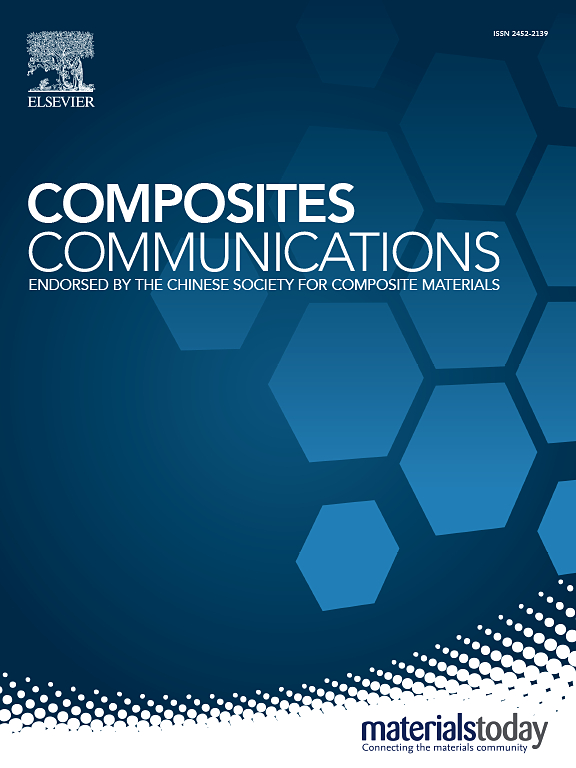Flexible and multifunctional carboxylic styrene butadiene rubber/CNT@PDA/MXene composites film for effective electromagnetic interference shielding, thermal management, and energy harvesting
IF 6.5
2区 材料科学
Q1 MATERIALS SCIENCE, COMPOSITES
引用次数: 0
Abstract
Considering the grave predicament of electromagnetic wave pollution and the intricate circumstances surrounding its application, it is crucial to consolidate multiple functionalities within a singular substance. However, significant challenges persist in effectively incorporating multifunctionality into engineered materials for electromagnetic shielding. Herein, we fabricated carboxylic styrene butadiene rubber (XSBR)/carbon nanotube modified by polydopamine (CNT@PDA)/MXene multifunctional composites film with outstanding overall performance. CNTs were modified with polydopamine to form CNT@PDA. MXene and CNT@PDA were assembled by hydrogen bonding interactions to form “Line-Plane”-like CNT@PDA/MXene. Introduction of PDA improved interfacial interaction between CNTs and MXene. The composite films demonstrated remarkable electromagnetic interference shielding effectiveness of 58.5 dB. This can be ascribed to the collaborative effects of polarization relaxation, multiple internal reflection loss, and dielectric loss induced by the “Line-Plane”-like CNT@PDA/MXene heterostructure filler. Meanwhile, it also exhibited impressive Joule heating capabilities (reaching temperatures as high as 158.2 °C at 2.6 V), showcasing it immense potential in complex environments. Importantly, the stable open-circuit voltage of the single-electrode triboelectric nanogenerator assembled by the composite film can reach 74 V (PDMS, 2.5 × 2.5 cm2, 8N). Therefore, this study not only proposes a technique for preparing “Line-Plane” heterostructure fillers but also outlines a method to construct multifunctional films that are suitable for electromagnetic shielding, aerospace engineering, and other harsh conditions.

求助全文
约1分钟内获得全文
求助全文
来源期刊

Composites Communications
Materials Science-Ceramics and Composites
CiteScore
12.10
自引率
10.00%
发文量
340
审稿时长
36 days
期刊介绍:
Composites Communications (Compos. Commun.) is a peer-reviewed journal publishing short communications and letters on the latest advances in composites science and technology. With a rapid review and publication process, its goal is to disseminate new knowledge promptly within the composites community. The journal welcomes manuscripts presenting creative concepts and new findings in design, state-of-the-art approaches in processing, synthesis, characterization, and mechanics modeling. In addition to traditional fiber-/particulate-reinforced engineering composites, it encourages submissions on composites with exceptional physical, mechanical, and fracture properties, as well as those with unique functions and significant application potential. This includes biomimetic and bio-inspired composites for biomedical applications, functional nano-composites for thermal management and energy applications, and composites designed for extreme service environments.
 求助内容:
求助内容: 应助结果提醒方式:
应助结果提醒方式:


